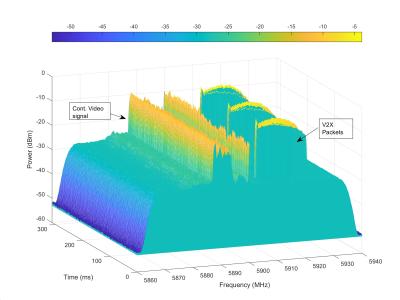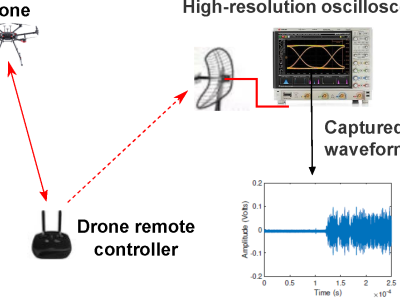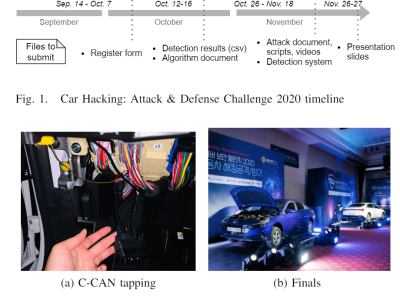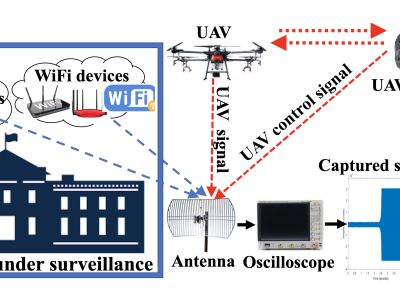Dataset : IQ Samples for V2X Communication System combined with Narrow-Band Interference

- Citation Author(s):
- Submitted by:
- Ashish Sheikh
- Last updated:
- DOI:
- 10.21227/hb0r-rm55
- Data Format:
 84 views
84 views
- Categories:
- Keywords:
Abstract
This paper explores the applications of the 45 MHz U-NII-4 band in vehicle-to-everything (V2X) communication system, a technology adopted (or being adopted) by numerous countries to facilitate safety warning applications and mitigate collision risks. However, the operational efficiency of V2X systems can be undermined by intentional and unintentional interference provoked by the increasing user base in adjacent bands and potential malicious entities in the V2X operating band. This study offers a comprehensive review of the possible interference sources, with a primary focus on in-band interference at road side infrastructure. A detailed analysis is conducted by evaluating the impact of varying interference power levels and frequency offsets on V2X packet reception. To address the interference detection, we introduce a time-frequency processing of the time domain data which is easily implementable by the chipset vendors, operates during standard receive cycles and provides PHY-layer metrics to the host layers.
Instructions:
- The complete dataset is a ZIP file with 1183 .mat files.
- Each ZIP file contains the data for signal power A with varying interference power levels and frequency offsets for easy access.
- Each .mat file represents IQ samples of 802.11p data at a power level A and IQ samples of narrowband interference at power level B at an offset of X MHZ.
- Filename is the following format : final_data_sig_pwr=A_intf_pwr=B_fcOffset=XMHz.mat
- Narrow-band interference BW is 4~7MHz, and the data is initially collected from 5.8GHz and 5.9GHz video cameras operating in the channel 5800 to 5925MHz.
For example, the filename final_data_sig_pwr=0_intf_pwr=-16_fcOffset=10MHz.mat indicates that the 802.11p samples at a power level of 0 dBm are combined with narrowband interference at a power level of -16 dBm, whose centre frequency is offset by +10 MHz with respect to the 802.11p waveform.
Dataset Files
- IQ samples with signal(802.11p) power at 0 dBm and varying interference power levels and frequency offsets (Size: 2.02 GB)
- IQ samples with signal(802.11p) power at -8 dBm and varying interference power levels and frequency offsets (Size: 2.02 GB)
- IQ samples with signal(802.11p) power at -16 dBm and varying interference power levels and frequency offsets (Size: 2.02 GB)
- IQ samples with signal(802.11p) power at -24 dBm and varying interference power levels and frequency offsets (Size: 2.02 GB)
- IQ samples with signal(802.11p) power at -32 dBm and varying interference power levels and frequency offsets (Size: 2.02 GB)
- IQ samples with signal(802.11p) power at -48 dBm and varying interference power levels and frequency offsets (Size: 2.02 GB)
- IQ samples with signal(802.11p) power at -40 dBm and varying interference power levels and frequency offsets (Size: 2.02 GB)
- IQ samples with signal(802.11p) power at -64 dBm and varying interference power levels and frequency offsets (Size: 2.02 GB)
- IQ samples with signal(802.11p) power at -56 dBm and varying interference power levels and frequency offsets (Size: 2.02 GB)
- IQ samples with signal(802.11p) power at -88 dBm and varying interference power levels and frequency offsets (Size: 2.02 GB)
- IQ samples with signal(802.11p) power at -80 dBm and varying interference power levels and frequency offsets (Size: 2.02 GB)
- IQ samples with signal(802.11p) power at -72 dBm and varying interference power levels and frequency offsets (Size: 2.02 GB)
- IQ samples with signal(802.11p) power at -92 dBm and varying interference power levels and frequency offsets (Size: 2.02 GB)








